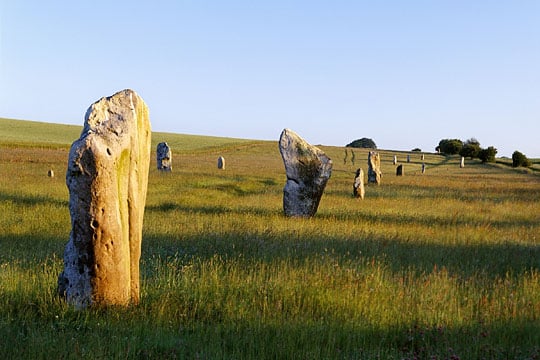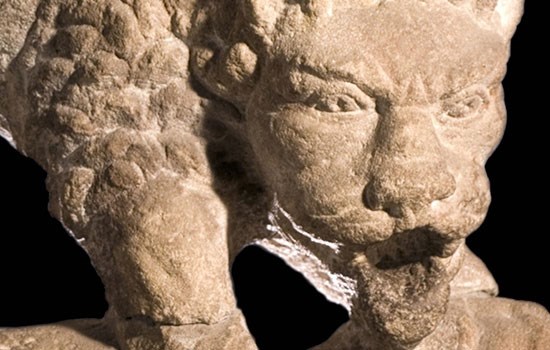History of West Kennet Avenue
The Avenue relates to nearby Avebury and the Sanctuary, and was erected sometime after the initial construction of both, suggesting a changing relationship between the older monuments. As well as marking the route to Avebury, the stones seem to have acted as grave markers for some members of the Avebury community.

Some time after the Avenue was erected, several shallow burials were placed at the foot of the stones.
In the 1930s Alexander Keiller, heir to the Keiller marmalade fortune, excavated four graves, all belonging to the Beaker period (about 2500–1800 BC); three contained a single person, but the fourth had the remains of three. These were particularly important people or, possibly, they were buried as sacrificial offerings in some form of ancestor worship.
Elsewhere along the Avenue, excavations revealed scatters of human bone, presumably also from burials.
Lost Stones
Many of the stones had already disappeared by the time the first record of the Avenue was made, by John Aubrey, in the 17th century. William Stukeley, in the following century, left an account of the massive destruction of the standing stone monuments of Avebury. They were being torn down and broken into fragments for building material.
Alexander Keiller was able to demonstrate that the practice of burying the stones had happened since the Middle Ages when they were possibly associated with pagan worship and considered the work of the devil.
Stukeley recorded a similar avenue on the Beckhampton side of the Avebury henge but little of this remains today.
Description
Originally, the Avenue consisted of around 100 pairs of standing stones. These created a corridor 49 feet (15 metres) wide along the entirety of the winding 1.5 mile (2.5 kilometres) course. Each pair of stones stood about 80 feet (24.5 metres) from the next.
The sarsen stones used are not quite as large as those at Avebury and average about 10 feet (3 metres) high.
They appear to have been selected for their shape; some are long and cylindrical, while others are broad and often triangular in shape. Generally, stones of the two different types stood opposite each other. It has been suggested that they may have been intended as male and female representations, the male being long and cylindrical and the female triangular.
Largely thanks to the efforts of Alexander Keiller whose excavations resulted in their being found and re-erected, there are now 27 upright stones, and the sites of 37 others are marked by concrete pillars.
The course of the Avenue appears to take little regard of the natural contours of the area and, on first sight, there seems little logic behind the choice of the route. The discovery and excavation of a Neolithic site that the Avenue skirts, however, suggests that the curves and bends in its course may well have respected existing settlements and buildings.
Further Reading
Thom, A and Strang, A, ‘Avebury: the West Kennet Avenue’, Journal for the History of Astronomy, 7 (1973), 193–7
FIND OUT MORE



